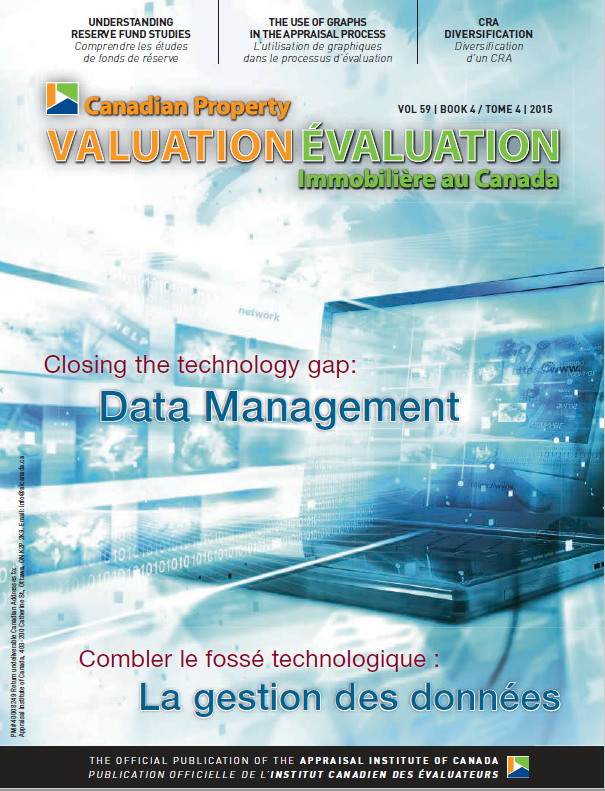History of Standards
Canadian Property Valuation Magazine
Search the Library Online

By Larry Dybvig, AACI, P.App
Volunteer Member, Standards Sub-Committee
Professional associations maintain professional standards for their members; it is a hallmark of a professional organization. These standards reflect a combination of excerpts adopted from the standards of other similar organizations, sections developed to reflect court decisions, statutes and common law, and common sense. For many years, the Appraisal Institute of Canada (AIC) requirements for professional practice and ethical behavior were encompassed in a simple document, the Standards of Professional Practice. Typically seven pages in length, it set out fundamental principles and performance standards.
Then along came the U.S. Savings and Loans disaster. These small community banks were deregulated in the 1980s, with the taxpayer guaranteeing all deposits. The combination of poor legislation and a lack of oversight led to many poor loans, staggering losses, and billions of government guarantees. As part of cleaning up the mess, U.S. regulators decided to regulate the appraisal profession, establishing laws for federally regulated financial institutions that required standardization and public involvement. An organization called The Appraisal Foundation was created to aid in this effort; one of the things it created was a standard document of ethics and professional practice, the Uniform Standards of Professional Appraisal Practice, universally referred to as USPAP. The AIC had representation in the Foundation’s work.
USPAP was a lengthy document. It set out fundamental principles and performance standards, but also provided prescriptive rules detailing various requirements. For example, it created three different report types – Restricted, Summary, and Full Narrative.
USPAP was the result of a massive effort and extensive resources; it was the state of the art in professional appraisal standards. In 1993, the AIC adopted USPAP as its main professional standards document, and created a Canadian supplement, which contained the AIC ethical standards and important professional practice requirements.
Over the years, USPAP continued to grow in response to the needs of U.S. regulators and the lending and appraisal industries. For Canadian appraisers, keeping current became burdensome, and it became obvious that the detail of the document far exceeded what was needed for our environment.
By the late 1990s, the AIC decided to develop its own professional standards. These needed to maintain the principles set out in USPAP, yet better meet the requirements of Canadian appraisers and industry stakeholders. The Canadian Uniform Standards of Professional Appraisal Practice (CUSPAP) that came into effect were simple, and included an additional section setting out best practices; we know this as the Practice Notes. These standards returned to the principle of setting out performance standards, advising appraisers on what result was required, but leaving them the discretion to determine the best way to achieve that result.
Around the same time, international regulators and industry developed global standards for financial reporting. The International Financial Reporting Standards (IFRS) led to the International Valuation Standards (IVS). The AIC monitors IVS, has had members actively involved in the IVS Council, and ensures that CUSPAP reflects the principles of IVS. In 2014, the AIC submitted its compliance report to IVSC, which confirmed that CUSPAP not only meets, but exceeds IVS.
With the release of CUSPAP 2014 came the introduction of a standalone standard for reserve fund studies (RSF). As part of its strategic focus to identity opportunities for AIC members to expand their scope of practice, the AIC moved the RFS activity from the Consulting Standard in a manner that allowed CUSPAP to expand the scope of practice of CRA-designated members specifically for RFS assignment, all the while keeping the scope limitations for appraisal, review and consulting assignments. The forward-thinking approach reflects a growing requirement for professional services that has evolved primarily from the condominium subdivision marketplace.
The structure of CUSPAP provides the flexibility to adapt to the changing needs of appraisers and industry stakeholders. One of the main principles of its authors, a preference for performance standards rather than prescriptive standards, is widely admired by practitioners and standards-setting organizations throughout the world.





